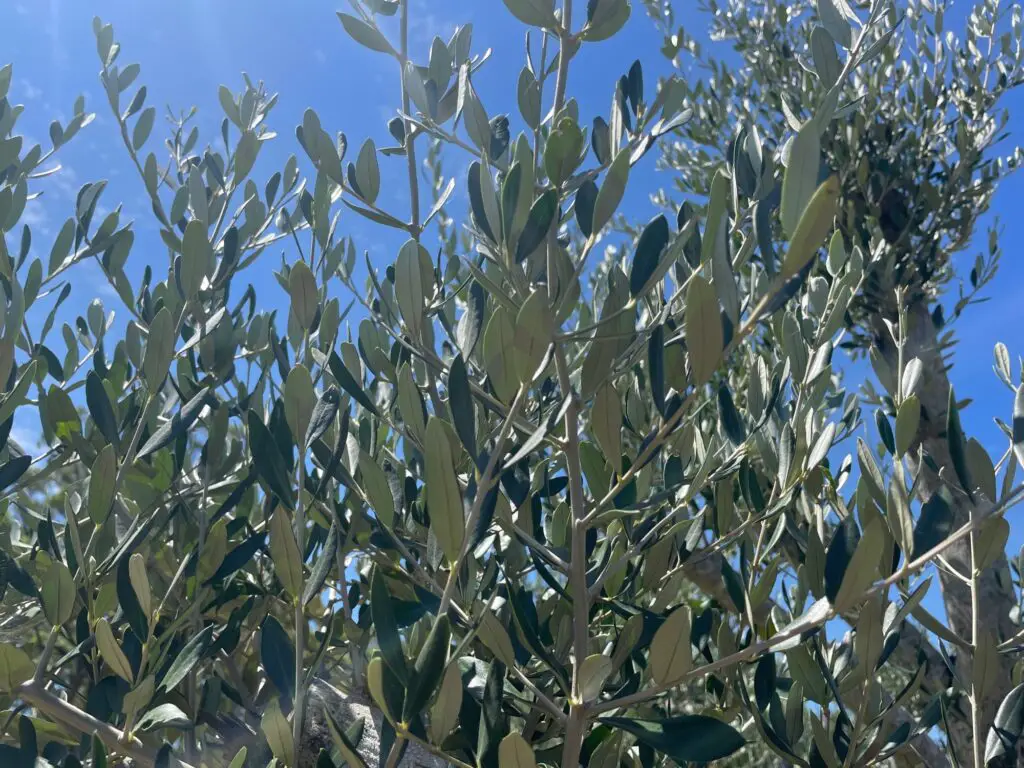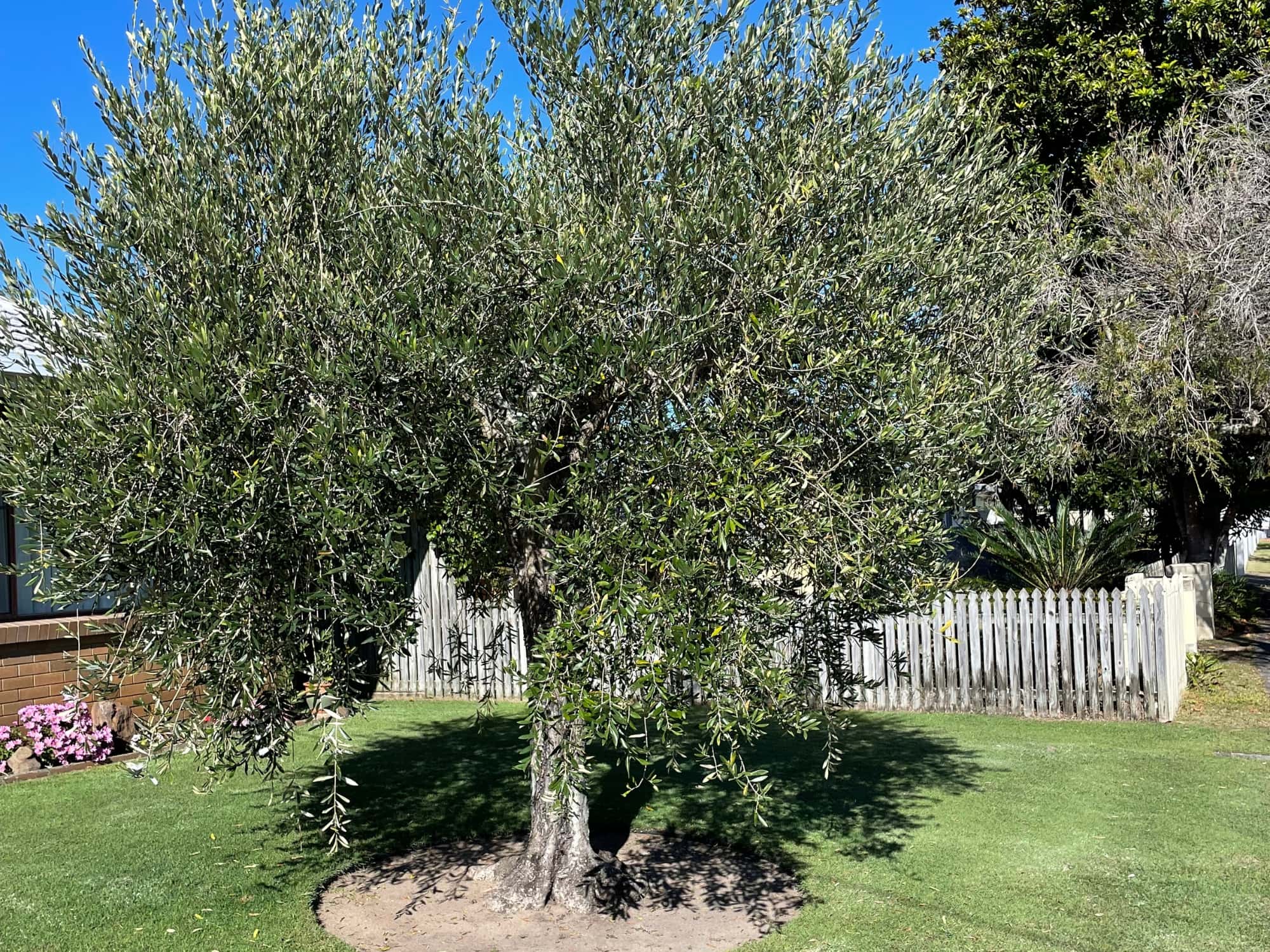Yes, olive trees can lose their leaves, but there are different factors and conditions that can contribute to leaf loss in olive trees.
Olive trees are evergreen, which means that they keep their leaves all year round. Their all-year-round green foliage is one of the reasons that olive trees are a popular indoor and outdoor plant.
Understanding the growing cycle of olive trees is essential to caring for them year-round. Generally, the leaf shredding process is done during the winter months when the tree isn’t growing but conserving energy. New growth will usually come after winter when the olive tree starts the growth phase again.
Other factors that can affect leaf loss in olive trees are:
- Overwatering can lead to root rot, causing the leaves to go yellow and fall off.
- Underwatering can lead to leaves dropping off, as the tree will lose leaves to conserve water.
- Lack of nutrients in the soil can weaken the leaves causing them to fall off, making them more likely to suffer leaf loss.
- Pests and diseases can damage the leaves causing them to fall off.
- Season changes. During winter months, olive trees can go into a dormant phase. It is likely that it will lose some leaves during this period until summer when it will replace those leaves with new ones. If the olive tree sheds a lot of leaves in the winter then this may be a sign that something else is going on.
- Environmental factors. Olive trees need full sunlight to thrive. If the tree is in a pot and it has recently been moved to a position where it gets less sunlight then this could negatively impact the tree and it may shed leaves as a result. Olive trees also prefer warm weather, and although they can tolerate frost, extended exposure to extreme cold weather could also lead to leaf shedding.
Quick Facts
- Olive trees are evergreen but do naturally shed old leaves which get replaced with new growth.
- Leaf loss can be due to overwatering, underwatering, pests, diseases, lack of nutrients, a change in seasons, and environmental factors.
- Propper care and maintenance can help minimize leaf loss in olive trees. This includes balanced watering and fertilization and controlling pests and diseases.
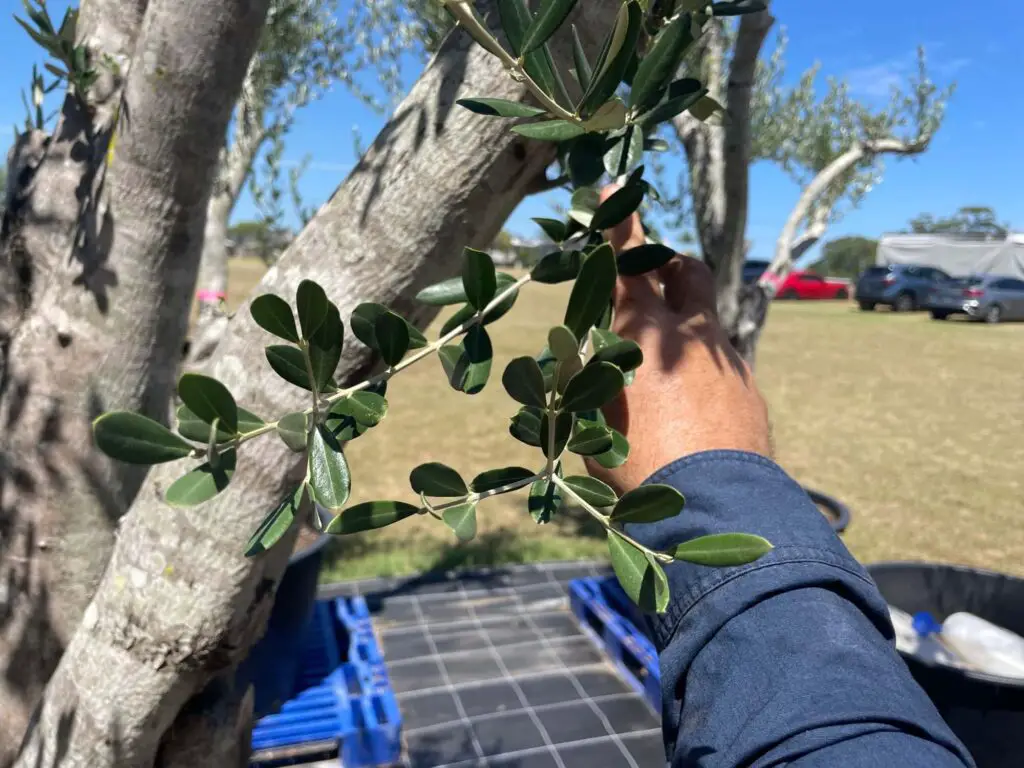
Understanding Olive Trees
Characteristics of Olive Trees
Native to the Mediterranean region, olive trees are hardy evergreen trees that can grow up to 6 to 9 meters (20 to 30 feet). They can be grown both indoors and outdoors, in pots and in the ground.
Olive trees are known to be tough and hardy plants, resistant to drought and pests, which have made them a popular plant for landscaping.
Growth Cycle of Olive Trees
The growth cycle of olive trees happens over 4 cycles.
- Dormancy. During winter, the olive tree will enter a state of dormancy. During this time the tree growth will slow down and it will shed some of its leaves if needed to conserve energy.
- New growth. When coming into the warmer months, the olive tree will start to grow new branches and replace any lost leaves.
- Flowering. Olive trees will produce flowers that will be pollinated by the wind and insects which will develop into olives. Olive trees are self-pollinating, meaning the flowers have both male and female parts to produce the fruit.
- Fruiting. Fruit will develop in late summer to early fall. Depending on the tree, fruit can be either a green or black color and can be processed into olive oil or eaten as a snack.
Caring for Olive Trees
To prevent leaf loss in olive trees, proper care is essential.
Overwatering, lack of sunlight, and cold temperatures and the biggest factors that will make your olive tree shed leaves. Olive trees are drought-tolerant plants, so only water once the soil is dry to the touch. Overwatering can also cause other issues such as root rot which can lead to leaf loss.
If in a pot, move the tree where it will receive a minimum of 6 to 8 hours of direct sunlight. Otherwise, prune nearby trees that are blocking the sunlight to the olive tree so it gets sufficient sunlight.
If in an extremely cold environment and the olive tree is in a pot, move it indoors out of the cold environment. This will also help the tree minimize leaf loss during this period.
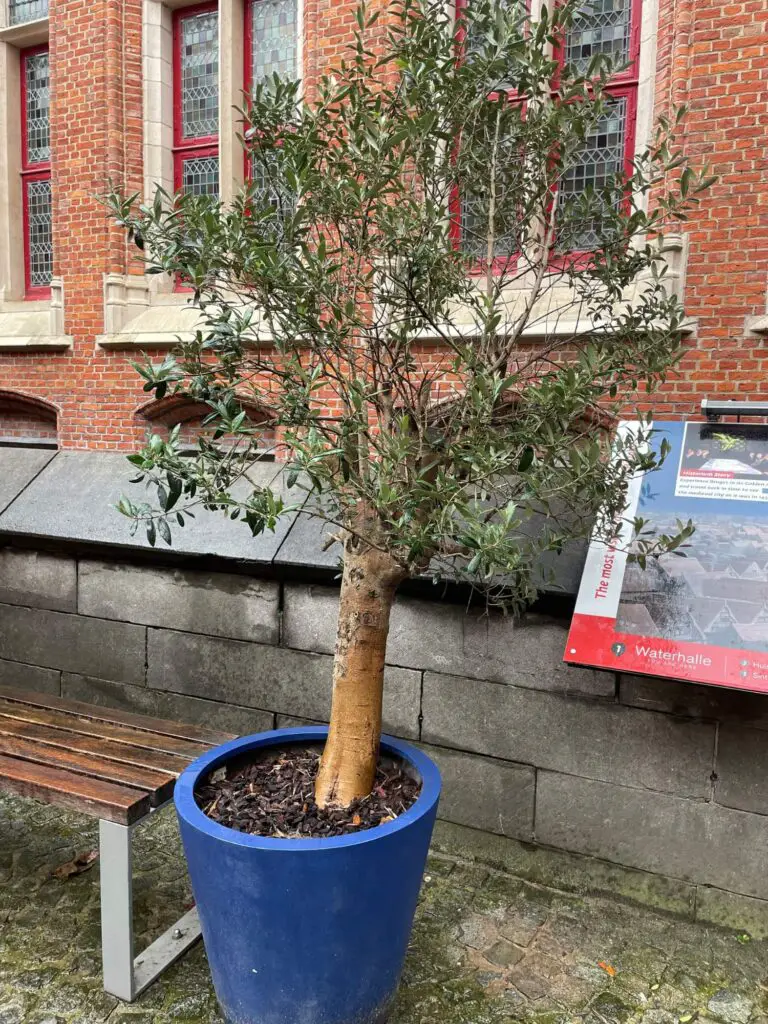
Pruning Olive Trees
Good pruning is also another way to improve the health and conditions of an olive tree. Pruning helps to:
- Remove dead and diseased branches.
- Improve air curculation.
- Promote fruit production.
A list of tips for pruning olive trees are:
- Prune in late winter or early spring, before the tree begins to put out new buds.
- Remove any dead, damaged, and diseased branches.
- Prune any branches that are crossing and rubbing each other.
- This out the area around the trunk of the tree to improve air circulation.
Make sure to clean your cutting tools so you don’t spread any diseases amongst your plants.
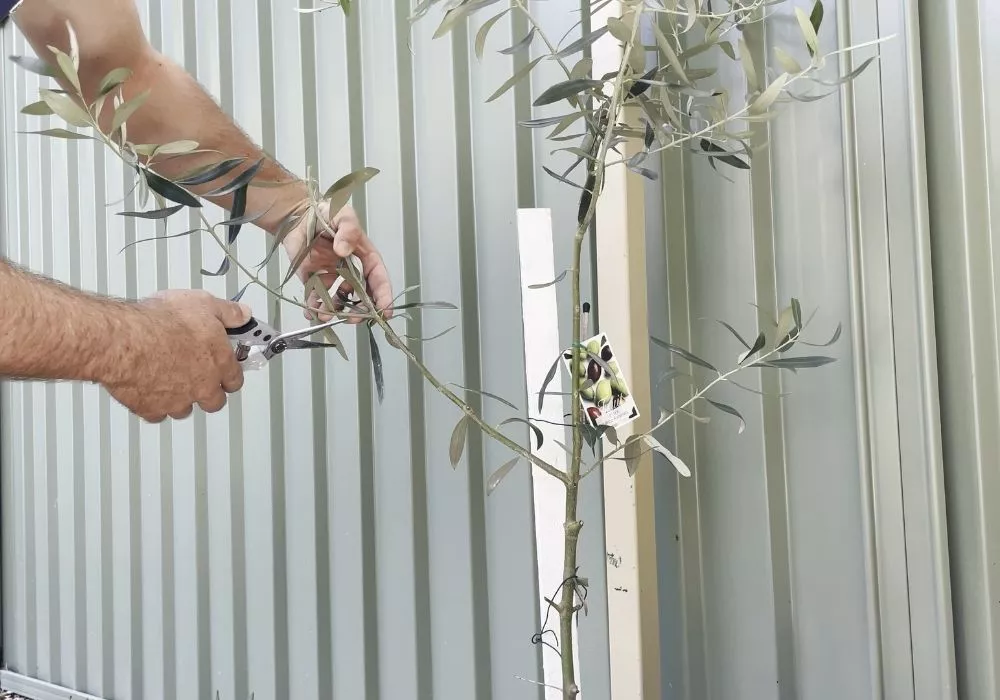
FAQs
When Do Olive Trees Typically Shed Their Leaves?
Olive trees are evergreen plants, which means that they do not lose all of their leaves during winter. They do have a natural shedding of old leaves during the winter months when the growth of the tree slows down. They will grow these leaves back during early spring and summer as the tree prepares for a new growing phase.
What Causes Olive Tree Leaves to Fall Off?
The reasons that an olive tree may shed some of its leaves include overwatering, underwatering, lack of nutrients, pests, and diseases, seasonal changes, and environmental changes.
How Can I Prevent My Olive Tree from Losing Its Leaves?
Provide your olive tree with the proper care and maintenance to minimize the amount of leaf shedding. This includes correctly watering, providing it with sufficient sunlight, protecting it from extreme cold temperatures, and proper pruning of the tree.
What Should I Do If My Olive Tree Is Losing Its Leaves?
Assess the situation to work out what is the most likely reason that your olive tree is shedding its leaves, and then solve that issue.
Can Olive Trees Survive Without Leaves?
Olive trees can survive for a little while without leaves, but it is not ideal as plants require leaves for photosynthesis. Without any leaves, an olive tree will not be able to sustain itself and will eventually die.
How Often Should I Water My Olive Tree?
The amount and frequency of watering of your olive tree depends on the climate, soil type, and size of the tree. Generally, olive trees do not like to be overwatered and are tolerant of drought conditions. Check the dryness of the soil before watering an olive tree.
If an olive tree is overwatered it could develop root rot, which will make it more susceptible to diseases.
When Do Olive Trees Grow New Leaves?
Olive trees will regrow any dropped leaves during the spring and summer months after being dormant for the winter season.
